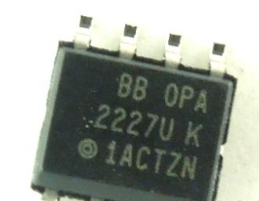Hello,
we are using the OPA2227 for a very long time without any problems. Some of the date codes are: 31ZB8, 57AP45, 7623H... The input bias current always was in the range of 1nA or less.
Now we have (in the same product) the OPA2227U with date code 19ZM6 and we have detected an input bias current of 83 nA (Date sheet: max. 10 nA). Is this a known problem? Is it a valid TI date code or what is wrong?
Best regards, Uwe



